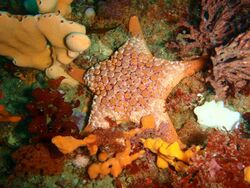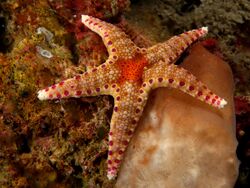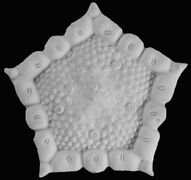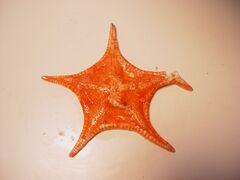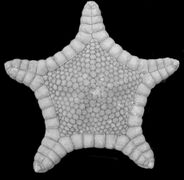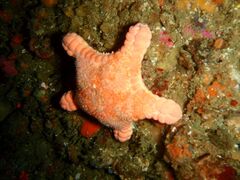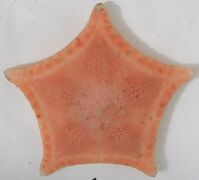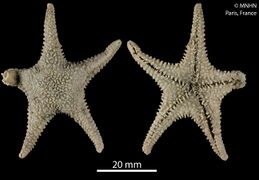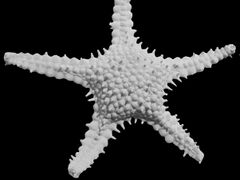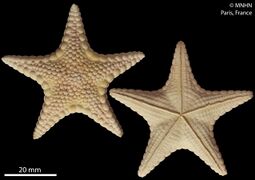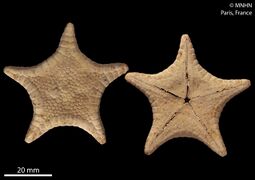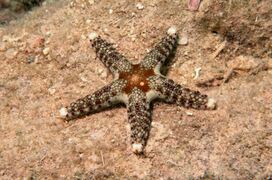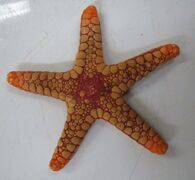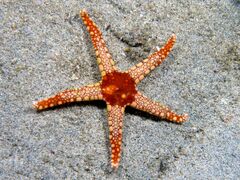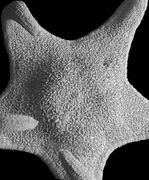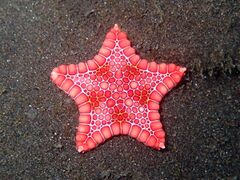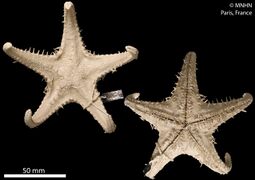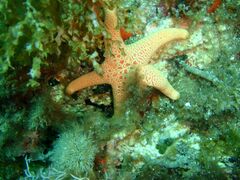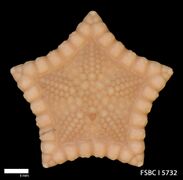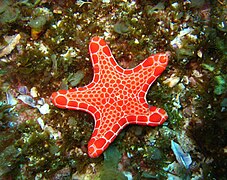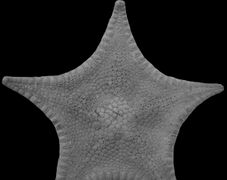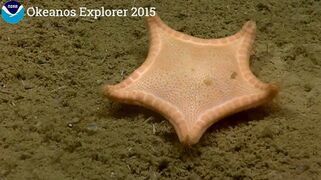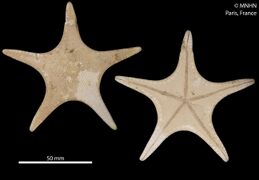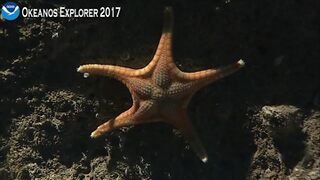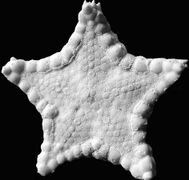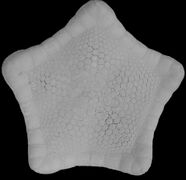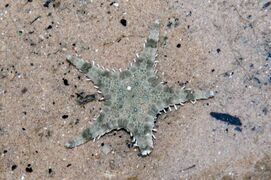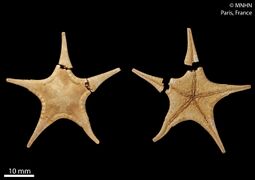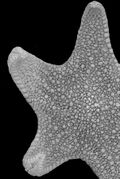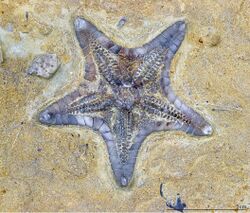Biology:Goniasteridae
| Goniasteridae | |
|---|---|
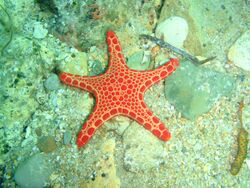
| |
| Pentagonaster duebeni | |
| Scientific classification | |
| Domain: | Eukaryota |
| Kingdom: | Animalia |
| Phylum: | Echinodermata |
| Class: | Asteroidea |
| Order: | Valvatida |
| Family: | Goniasteridae Forbes, 1841 |
| Genera | |
|
See text | |
Goniasteridae (the biscuit stars) constitute the largest family of sea stars, included in the order Valvatida. They are mostly deep-dwelling species, but the family also include several colorful shallow tropical species.
Description
Goniasteridae are usually middle-sized sea stars with a characteristic double range of marginal plates bordering the disk and arms. Most of them have five arms, often short and triangular, around a broad central disc; many species are pentagonal or subpentagonal, covered densely with granular, seed-like protuberances, hence the name of the family "seed-star" (gonium+aster). The aboral face is often covered with tiny spines looking like paxillae. Pedicellariae are often valvate, and the gonads are located at the interradius.[1]
Main identification keys for this group include the presence of paxillae, granules, teeth, spines, or the shape and dimensions of marginal plate.[2]
Location and habitat
They occur predominantly on deep-water continental shelf habitats (but a part of them inhabit shallow waters)[3] in all the world's oceans, being the most diverse in the Indo-Pacific region.[4]
List of genera
About 260 extant species within 70 genera are currently known, which make this family the most diverse of all the sea stars,[5] even if half of the genera are monospecific. Species belonging to the Ferdininae subfamily have been imported from Ophidiasteridae thanks to a large revision of these two families in 2017[6]
According to World Register of Marine Species, this family includes the following genera:[7]
Evoplosoma sp.
Rosaster sp.
Extinct genera
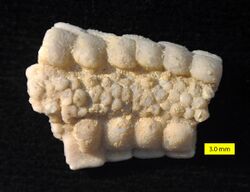
Lists of genera containing extinct species according to fossilworks.[8]
References
- ↑ "Family Goniasteridae". http://species-identification.org/species.php?species_group=echinodermata&id=8&menuentry=groepen.
- ↑ "Family Goniasteridae". http://nzetc.victoria.ac.nz/tm/scholarly/tei-Vic24Zool-t1-body-d5-d5.html.
- ↑ Mah, Christopher L. (2015-03-05). "New species, corallivory, in situ video observations, and overview of the Goniasteridae (Valvatida, Asteroidea) in the Hawaiian region". Zootaxa 3926 (2): 211–228. doi:10.11646/zootaxa.3926.2.3. ISSN 1175-5334. PMID 25781779. https://pubmed.ncbi.nlm.nih.gov/25781779/.
- ↑ Clark, A. M. An index of names of recent Asteroidea Part 2: Valvatida. Echinoderm Studies 4 (1993)
- ↑ Christopher Mah (23 April 2013). "How many starfish species are there ? Where do they Live ? How long have they been around ? Five Points about Sea Star Diversity". http://echinoblog.blogspot.fr/2013/04/how-many-starfish-species-are-there.html.
- ↑ Christopher Mah, "Overview of the Ferdina-like Goniasteridae (Echinodermata: Asteroidea) including a new subfamily, three new genera and fourteen new species", Zootaxa, vol. 4271, 2017.
- ↑ Christopher Mah (2014), Goniasteridae Forbes, 1841, In: Mah, C.L. (2014) World Asteroidea database, accessed through World Register of Marine Species
- ↑ "Fossilworks: Goniasteridae". http://www.fossilworks.org/cgi-bin/bridge.pl?a=taxonInfo&taxon_no=53913.
Wikidata ☰ Q2076886 entry
 |

